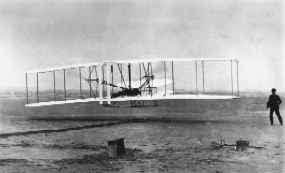
Be Prepared – Boy Scout Motto
Growing up I was a Boy Scout. Troop 300. In fact, I believe my mother held on to my uniform long after I was grown and gone from home. Those formative years being in Scouts was a great time to learn many adventurous things.
The character lessons learned in Scouts – things like being faithful, respectful, frugal, and kind are timeless.
 My friend and author John Patrick Hickey wrote a remarkable book entitled, Scouting Out of Uniform: How the Boy Scout Oath & Law can lead You to a Successful Life. It’s a great book, even if you are not a Scout or ever have been.
My friend and author John Patrick Hickey wrote a remarkable book entitled, Scouting Out of Uniform: How the Boy Scout Oath & Law can lead You to a Successful Life. It’s a great book, even if you are not a Scout or ever have been.
In it, he writes, “ Positive people see the world and life around them for exactly what it is. They know troubles and difficulties are all around us. They face the same challenges of work, home, and life like anyone else does. Here’s the difference, positive people do not allow the difficulties of life to get them down and refuse to accept defeat.”
Click here to order Scouting Out of Uniform
When it comes to being stuck in your leadership as I have written about in this series – those times when we feel like we are in a fog, when we feel like we are in a rut, when we feel like we’ve lost momentum, and when we feel like we are not making any progress – we have a choice to make.
Before unpacking principle # 4, let’s review the principles thus far:
- Principle # 1 – Be Present. Here we learned that when you are stuck is not a time to panic. It’s normal. Chances are, you’ve been stuck before and will be again at some point.
- Principle # 2 – Be Patient. Being stuck will not last forever but what you learn during these times will be invaluable to your leadership going forward.
- Principle # 3 – Be Practical. You will hit your stride again so you need to be realistic about where you are and what you can do in this season.
No one likes to be stuck. I get it. When stuck, you feel like you are being left behind, but it can be a great time of learning and growth if you manage it properly once the fog begins to lift and you re-emerge from the ruts you were in. And this is where the next principle applies.
Be Prepared – You have new opportunities before you
When you begin to emerge from being stuck, hopefully, you have come away with some fresh insights and things that you learned during that time. The point being, every experience that you go through – good or otherwise, is preparing you for something greater on the other side.
The lessons you learn when stuck will make you a better leader, but now you can use that knowledge to benefit others in their time of struggle.
The key to successfully emerging to the other side of being stuck is to be prepared for what’s next. The mistake many leaders make when stuck is in spending all their energy trying to get unstuck rather than just being in the moment and learning from it. In doing so, you might discover a few things about why you were stuck, to begin with like:
- Your priorities were out of sync
- You tried to do it all yourself
- You were trying too hard to be a people pleaser rather than a leader
- You forgot that you need to take care of yourself – physically, mentally, emotionally, and spiritually
Final Thoughts
Being stuck is just a season you are in now. Discover the principles of being present, being patient, being practical, and being prepared. You’ve got this!
©2021 Doug Dickerson

The new book releases on AUgust 30th!


 you expect your people to follow you? Your goals and objectives have to be clear otherwise you’ll never hit your target.
you expect your people to follow you? Your goals and objectives have to be clear otherwise you’ll never hit your target.





